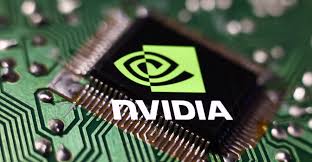
Nvidia delivered a blockbuster second-quarter performance, yet persistent doubts over its ability to sell H20 chips in China have cast a shadow over the otherwise dazzling results. While revenue, profit, and profitability margins soared to new highs, the market’s focus shifted to geopolitical headwinds, transforming a beat into a moment of cautious recalibration.
Stellar Quarter, But the Spark Dimmed by China Risk
Nvidia recorded a staggering 56% year-over-year revenue increase, reaching $46.7 billion—the strongest quarter in its history. Net income surged by nearly 60%, and profit margins held firm, with the company projecting a gross margin of approximately 73.5% for the current quarter—a sign of operational strength even amid turbulence.
However, investors fixated on two key issues. First, the data-center segment, which remains Nvidia’s critical revenue engine, generated $41.1 billion—vast in absolute terms but marginally below expectations. Second, and more significantly, Nvidia excluded any projected H20 chip sales to China from its outlook, despite having received some U.S. export approvals. This omission raised concerns over the company’s growth trajectory in one of AI’s most dynamic markets, prompting a pause in investor optimism.
China Drama: A $5 Billion Question Mark
Nvidia executives emphasized that resumed H20 chip shipments to China could add between $2 billion and $5 billion to third-quarter revenue. That potential upside, however, remains off the formal outlook due to regulatory ambiguity. While a year ago the U.S. had imposed broad restrictions on selling AI chips like the H20 to Chinese buyers, recent developments appear to have opened a window—conditional on a 15% revenue remittance from such sales. Yet Beijing's reluctance to embrace Nvidia chips, especially amid encouragement of domestic alternatives, has kept the door only partially open.
Without clarity from regulators in both Washington and Beijing, investors are left with a high-stakes waiting game. China represents a potential $50 billion annual opportunity for AI infrastructure—nearly half of Nvidia’s data-center annual business—so the lack of inclusion raises legitimate concern about near-term momentum.
Growth Remains Robust Beyond China
Despite the geopolitical overhang, Nvidia’s core business remains exceptionally healthy. Demand continues to surge for its AI GPUs and systems, as global tech giants, cloud providers, and enterprises chase generative AI capabilities. Around half of Nvidia’s data-center revenue originates from major hyperscalers, while sovereign AI initiatives are on track to generate $20 billion this year alone.
Nvidia’s leadership also emphasized that overall global AI infrastructure spending could top $3–$4 trillion over the next five years—underpinning long-term demand. New architectures like Blackwell remain fully booked through customer plans, signaling sustained interest beyond any single chip or market.
To reinforce investor confidence, the company approved an additional $60 billion in share buybacks, reflecting strategic discipline even amid uncertainty.
Market Reaction and Forward-Looking Uncertainty
Following the earnings release, Nvidia’s stock dipped between 2% and 5% in after-hours trading, erasing up to $110 billion from its once record-setting $4.4 trillion market cap. Analysts interpreted the muted market reaction as a shift from pure exuberance toward caution, given the uncertain China outlook and the reality that the AI boom may have plateaued momentarily.
Yet many bullish analysts argue that the stock tilt remains fundamentally unshaken—if China reopens, Nvidia’s near-term guidance may be conservative by billions. Trading at elevated valuations, the company now requires flawless execution to justify future multiples.
Meanwhile, macro sentiment held relatively steady. Broader indexes, including Nasdaq futures, remained flat as markets digested the mixed cues—strong earnings balanced against geopolitical ambiguity.
What Lies Ahead for Nvidia
Two critical questions will define the company’s trajectory in coming months.
First: Will China fully reopen as a viable market for Nvidia’s AI chips? Any return of H20 or subsequent Blackwell exports could inject billions into quarterly revenue. But even if sales resume, geopolitical strings like revenue sharing and national security scrutiny may dampen long-term viability.
Second: Can Nvidia expand revenue and margins through other fronts—such as automotive AI, robotics, enterprise servers, and adjacent compute systems? CEO Jensen Huang has highlighted a diverse opportunity pipeline, and rapid adoption outside China could offset part of lost export revenue.
(Source:www.marketscreener.com)
Stellar Quarter, But the Spark Dimmed by China Risk
Nvidia recorded a staggering 56% year-over-year revenue increase, reaching $46.7 billion—the strongest quarter in its history. Net income surged by nearly 60%, and profit margins held firm, with the company projecting a gross margin of approximately 73.5% for the current quarter—a sign of operational strength even amid turbulence.
However, investors fixated on two key issues. First, the data-center segment, which remains Nvidia’s critical revenue engine, generated $41.1 billion—vast in absolute terms but marginally below expectations. Second, and more significantly, Nvidia excluded any projected H20 chip sales to China from its outlook, despite having received some U.S. export approvals. This omission raised concerns over the company’s growth trajectory in one of AI’s most dynamic markets, prompting a pause in investor optimism.
China Drama: A $5 Billion Question Mark
Nvidia executives emphasized that resumed H20 chip shipments to China could add between $2 billion and $5 billion to third-quarter revenue. That potential upside, however, remains off the formal outlook due to regulatory ambiguity. While a year ago the U.S. had imposed broad restrictions on selling AI chips like the H20 to Chinese buyers, recent developments appear to have opened a window—conditional on a 15% revenue remittance from such sales. Yet Beijing's reluctance to embrace Nvidia chips, especially amid encouragement of domestic alternatives, has kept the door only partially open.
Without clarity from regulators in both Washington and Beijing, investors are left with a high-stakes waiting game. China represents a potential $50 billion annual opportunity for AI infrastructure—nearly half of Nvidia’s data-center annual business—so the lack of inclusion raises legitimate concern about near-term momentum.
Growth Remains Robust Beyond China
Despite the geopolitical overhang, Nvidia’s core business remains exceptionally healthy. Demand continues to surge for its AI GPUs and systems, as global tech giants, cloud providers, and enterprises chase generative AI capabilities. Around half of Nvidia’s data-center revenue originates from major hyperscalers, while sovereign AI initiatives are on track to generate $20 billion this year alone.
Nvidia’s leadership also emphasized that overall global AI infrastructure spending could top $3–$4 trillion over the next five years—underpinning long-term demand. New architectures like Blackwell remain fully booked through customer plans, signaling sustained interest beyond any single chip or market.
To reinforce investor confidence, the company approved an additional $60 billion in share buybacks, reflecting strategic discipline even amid uncertainty.
Market Reaction and Forward-Looking Uncertainty
Following the earnings release, Nvidia’s stock dipped between 2% and 5% in after-hours trading, erasing up to $110 billion from its once record-setting $4.4 trillion market cap. Analysts interpreted the muted market reaction as a shift from pure exuberance toward caution, given the uncertain China outlook and the reality that the AI boom may have plateaued momentarily.
Yet many bullish analysts argue that the stock tilt remains fundamentally unshaken—if China reopens, Nvidia’s near-term guidance may be conservative by billions. Trading at elevated valuations, the company now requires flawless execution to justify future multiples.
Meanwhile, macro sentiment held relatively steady. Broader indexes, including Nasdaq futures, remained flat as markets digested the mixed cues—strong earnings balanced against geopolitical ambiguity.
What Lies Ahead for Nvidia
Two critical questions will define the company’s trajectory in coming months.
First: Will China fully reopen as a viable market for Nvidia’s AI chips? Any return of H20 or subsequent Blackwell exports could inject billions into quarterly revenue. But even if sales resume, geopolitical strings like revenue sharing and national security scrutiny may dampen long-term viability.
Second: Can Nvidia expand revenue and margins through other fronts—such as automotive AI, robotics, enterprise servers, and adjacent compute systems? CEO Jensen Huang has highlighted a diverse opportunity pipeline, and rapid adoption outside China could offset part of lost export revenue.
(Source:www.marketscreener.com)














